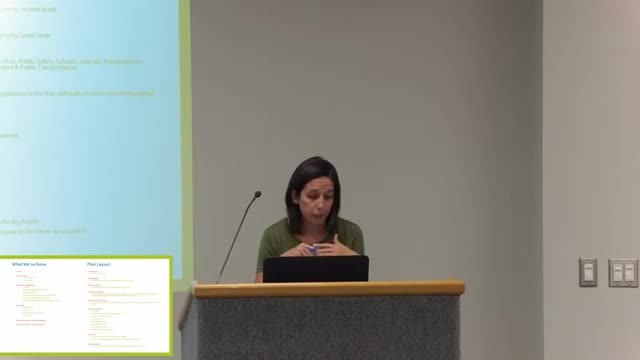City unveils ambitious plan to enhance walkability and safety
September 18, 2024 | Big Rapids, Mecosta County, Michigan
This article was created by AI summarizing key points discussed. AI makes mistakes, so for full details and context, please refer to the video of the full meeting. Please report any errors so we can fix them. Report an error »

In a recent government meeting, officials discussed a comprehensive non-motorized transportation plan aimed at enhancing the connectivity and safety of trails, sidewalks, and bike systems throughout the city. The plan includes several key chapters focusing on locations and improvements, future land use, and implementation strategies to guide city staff and planners in executing the proposed changes.
Among the highlights, the city boasts a well-developed trail system that effectively connects many parks, particularly in the northern part of Big Rapids. Efforts are underway to improve sidewalk connections, especially around schools, to promote walkability. However, the meeting underscored several areas needing improvement, particularly concerning safety at critical intersections. Notably, the intersection of Maple Street and State Street was identified as a hazardous crossing point.
Additional safety concerns were raised regarding pedestrian access from trails near Gypsy, Nickel, and Tioga to Sweet Hill, especially during icy conditions. The meeting also highlighted the need for better connections across the Muskegon River, with only one notably safe pedestrian crossing currently available.
Discussions included potential enhancements to bike lanes and access on city streets, with suggestions to utilize alleyways for safer bike routes due to lower vehicle traffic. The plan emphasizes the importance of connecting trail users to downtown, particularly through the White Pine Trail, and improving crossings on State Street to facilitate safer pedestrian movement.
The meeting concluded with a commitment to further develop the plan, which includes detailed maps indicating safer intersections and roadways, ensuring that the city continues to prioritize non-motorized transportation and community safety.
Among the highlights, the city boasts a well-developed trail system that effectively connects many parks, particularly in the northern part of Big Rapids. Efforts are underway to improve sidewalk connections, especially around schools, to promote walkability. However, the meeting underscored several areas needing improvement, particularly concerning safety at critical intersections. Notably, the intersection of Maple Street and State Street was identified as a hazardous crossing point.
Additional safety concerns were raised regarding pedestrian access from trails near Gypsy, Nickel, and Tioga to Sweet Hill, especially during icy conditions. The meeting also highlighted the need for better connections across the Muskegon River, with only one notably safe pedestrian crossing currently available.
Discussions included potential enhancements to bike lanes and access on city streets, with suggestions to utilize alleyways for safer bike routes due to lower vehicle traffic. The plan emphasizes the importance of connecting trail users to downtown, particularly through the White Pine Trail, and improving crossings on State Street to facilitate safer pedestrian movement.
The meeting concluded with a commitment to further develop the plan, which includes detailed maps indicating safer intersections and roadways, ensuring that the city continues to prioritize non-motorized transportation and community safety.
View full meeting
This article is based on a recent meeting—watch the full video and explore the complete transcript for deeper insights into the discussion.
View full meeting
